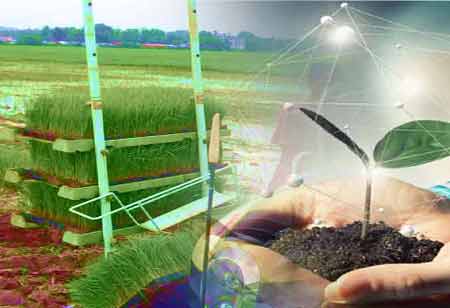Thank you for Subscribing to Agri Business Review Weekly Brief
Improving Agricultural Productivity and Performance Monitoring of Farm Equipment Using Digital Twins
Digital twins are virtual representations of actual objects, goods, vehicles, systems, and the data and information that travel through them.

By
Agri Business Review | Monday, October 31, 2022
Stay ahead of the industry with exclusive feature stories on the top companies, expert insights and the latest news delivered straight to your inbox. Subscribe today.
Digital Twins are the virtual or digital representations of actual Physical Objects. The Physical or the real object can be analysed for its performance measures using the digital twin.
FREMONT, CA: Digital twins are virtual representations of actual objects, goods, vehicles, systems, and the data and information that travel through them. With the use of digital twins, it is possible to simulate and altar items, vehicles, and processes from all angles. The closest thing to a real-time connection between the physical and digital worlds is where a digital twin derives its true strength.
The building blocks are sensors, data, an integration layer, analytics, and the digital twin, or virtual model itself. In particular, for asset optimisation and preventive Maintenance, digital twins promise to enhance situational awareness and enable better responses to changes. They can improve an asset's performance and help it last longer.
Digital twins are being utilised more frequently and successfully for product prototyping, cutting down on costs and development periods. They continue to see rather basic digital twins, such as virtual models of vehicles, oil platforms, prototypes, etc., because the market is still in its infancy. The demand is rising quickly, and so will the demand for digital twin templates, media, and services.
Over time, digital twins will be expanded from assets and things to operations, systems, people, business processes, and information structures. These digital representations will be more intricately linked to their physical counterparts and enhanced by artificial intelligence. The intricacy of the projects and the disparate and heterogeneous data sources provide challenges. The initial focus of digital twins will be on asset optimisation, monitoring, and fast prototyping.
Design Considerations from the Data Perspective
The manufacturer's or dealer's provided tractor data will be kept in a system database. The database data should be accessible and replicated by the Cloud system's Digital Twin creation, or it should be possible to seamlessly send database data into the Digital Twin system.
Digital Twin's manufacturers or dealers can also supply information like registration, insurance, and other legal information. Data analysis using a comprehensive farm information system is possible. By regularly updating the data for the Digital Twin, performance information can be checked against the Digital Tractor. Through communication with other service providers via the cloud, any changes to performance or maintenance can also be updated automatically. It is possible to retain a digital twin of the tractor's bill of materials, assembly, and component list. Regular updates to the Bill of Materials version are possible with OEM assistance via the Cloud.
Regular synchronisation against a digital tractor from the system of records is possible for all logistics-related documents, including purchase orders, invoices, calibration, corrective and preventive maintenance, replacement of parts, and repairs. Any specific operating instructions, ergonomics documentation or other crucial information might be kept as an attachment to the digital twin or should be easily accessible as a URL link.





